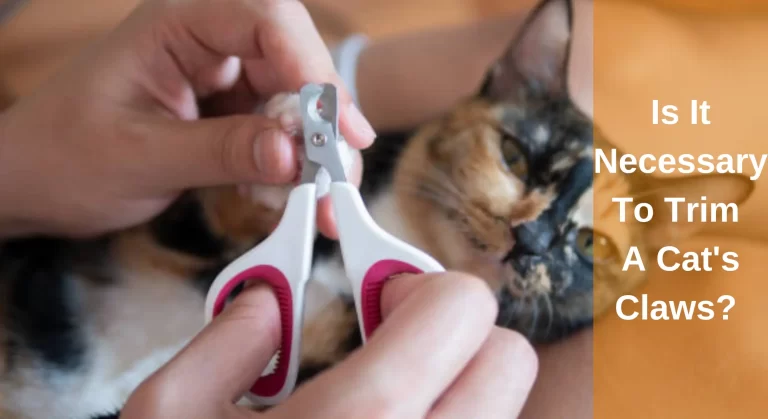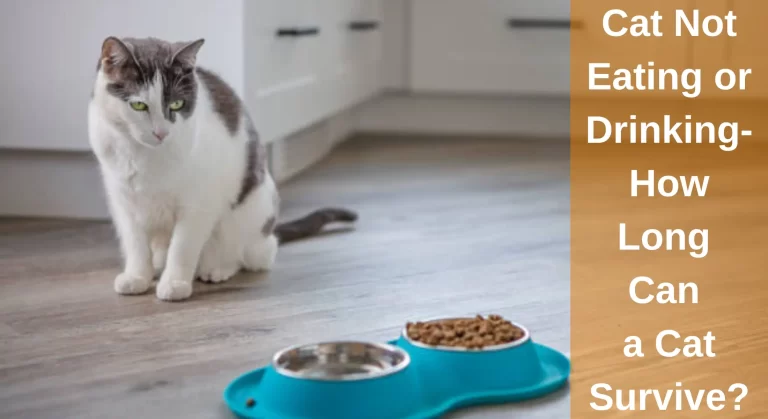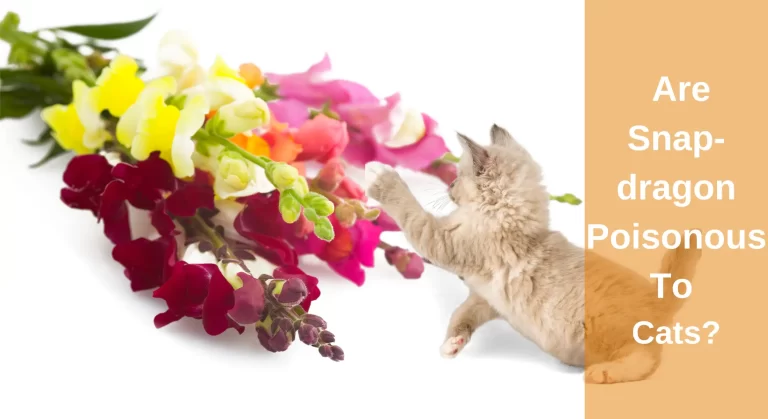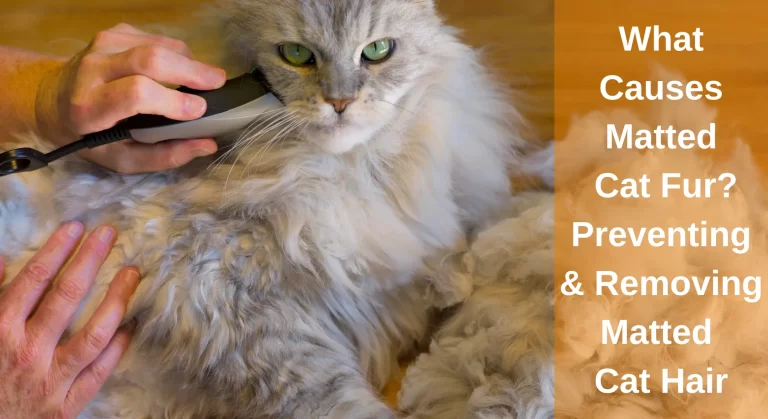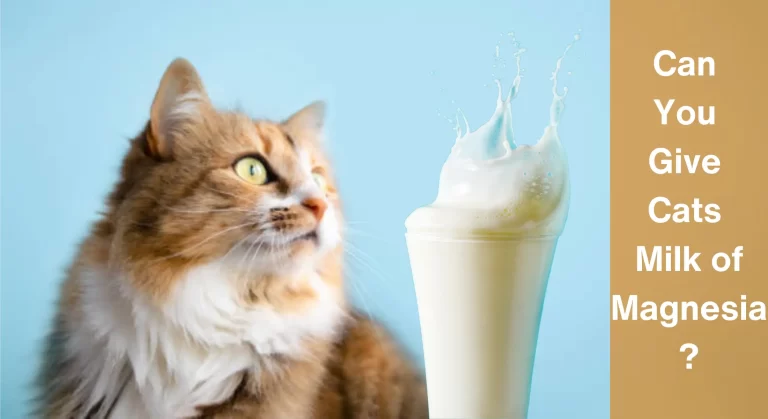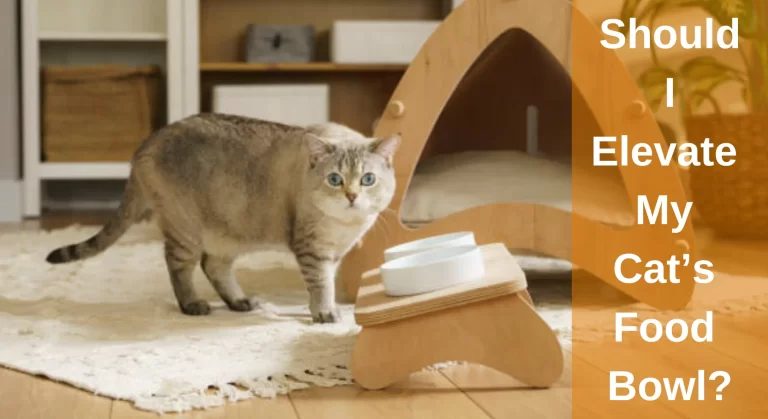The Ultimate Guide to – How Much to Feed a Kitten? Ketten Feeding 101
Both kittens and adult cats have different nutritional needs. Because they are growing fast, they require a wholesome and balanced diet for optimum development. They are also continuing to grow their immune system, acquire new skills, and sharpen their minds.
All newborn kittens must thus be given specialised kitten food since it contains the nutrients necessary for their growth. However, as they age, kittens must eventually be switched to cat chow. Their nutritional needs must change as they age.
But for how long should a kitten eat kitten food? How Much to Feed a Kitten? How do you effectively adapt to the new cuisine? What sort of adult cat food is best for your growing feline?
As you may think, it’s not a good idea to switch to a new meal suddenly. I go over all you need to know in this piece to ensure that your cat’s diet meets its nutritional requirements.
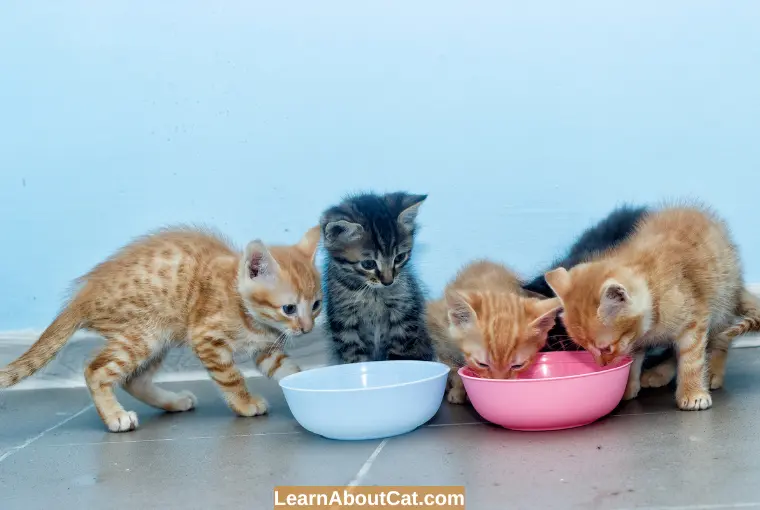
What Do Kittens Eat?
Newborn kittens suckle from their mothers to stay healthy. Milk substitutes may be used in case kittens don’t find their mother. Weaning may begin at three to four weeks of age, at which point extra solid meals may be given.
Kittens need a complete, balanced diet catered to their specific needs in terms of growth and development. Food rich in protein promotes growth and development for a young kitten. Calcium supports teeth and bones, while DHA promotes the growth of a strong brain and clear vision.
When is Dry and Wet Food Allowed for Kittens?
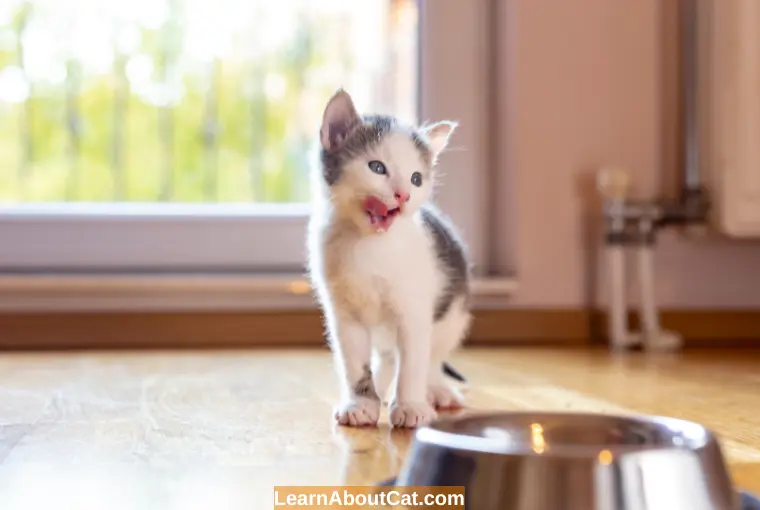
In the weaning stage, kittens prefer to play with food that is not too soft. Start with wet kitten food or moistened dry kibble to make the transition easier.
Mix three parts dry or wet kitten food and one part warm water to get started (it should look like oatmeal). Over the next two weeks, reduce your water intake while gradually increasing your food intake.
6-8 week kitten can eat both wet and dry food. By providing more wet and/or dry food options with a greater variety of flavours and textures, you can encourage her propensity for experimentation.
Dry kibble can be served on its own or combined with wet food. Choose the remedy your veterinarian suggests that best meets your needs once your kitten has finished weaning and is eating solid meals. Prior to anything else, be sure the wet or dry food you choose is created particularly for kittens.
How Much Should a Kitten Eat?
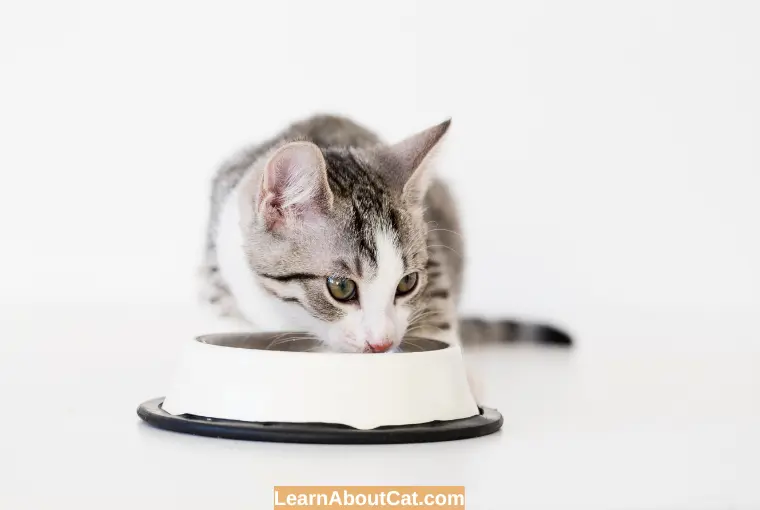
Now that you know what to feed a kitten, how much food should you offer her? Consult the feeding recommendations for kittens on the back of the package to determine how much to feed your cat. You may divide the wet canned food in half and feed her twice daily. You should discard any food that is left in her bowl. Use a refrigerator to store canned wet food.
Chart for Feeding Kittens
To ensure you are feeding your cat the correct amount of food, refer to the chart on the food label by keeping consideration of the feline’s age or weight. Here is an illustration of a kitten feeding chart that mirrors the details on kitten food packaging:
| Age | Weight | Feeding Amount & What To Feed | How Often |
| 0-1 Week | 50-150 grams | 2-6 ml kitten formula | Every 1 to 2 hours |
| 1-2 Weeks | 150-250 grams | 6-10 ml kitten formula | Every 2 hours |
| 2-3 Weeks | 250-350 grams | 10-14 ml kitten formula | Every 2 to 3 hours |
| 3-4 Weeks | 350-450 grams | 14-18 ml kitten formula | Every 3 to 4 hours |
| 4-5 Weeks | 450-550 grams | 18-22 ml kitten formula | Every 4 to 6 hours |
| 5-8 Weeks | 550-850 grams | Weaning (start with very small amount of wet food) | Every 6 hours |
How Much to Feed a Kitten at Every Kitten Growth Stage
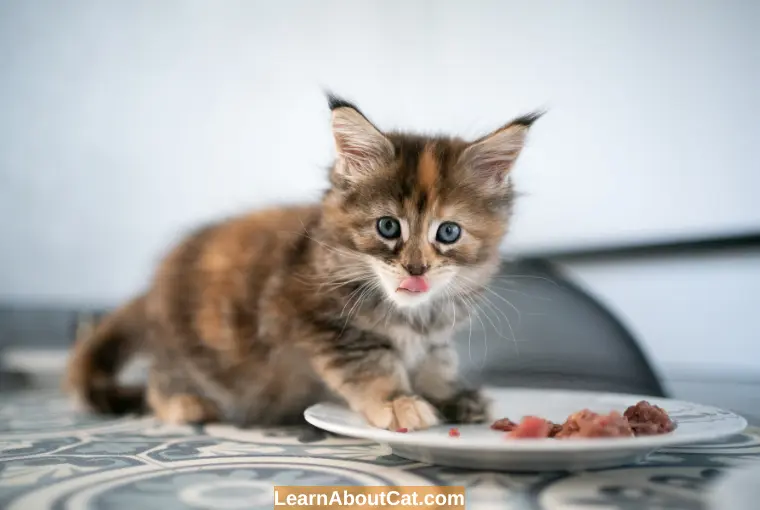
It depends on age as well as on the kitten’s weight. Diet varies in each feline developmental stage which is given below.
Giving Newborn Kittens Food (Four Weeks Old)
After their first week of life, when they normally breastfeed every two hours, newborn kittens often eat four to six times daily. Cats should gain between half and three-quarters of an ounce daily (15-20 grams). Milk supplements can be used for a kitten whose mother is not available for her baby.
Feeding Kittens for 4 to 6 Weeks
Around 3 to 4 weeks old, older kittens can start weaning or making the changeover to solid food. As often as possible during the day, give them access to their mother. Premium canned kitten food and warm water are combined to form wet cat food, which is gruel. Then you can switch from gruel to another diet for 5-6 weeks old.
Feeding Kittens 6 to 8 Weeks Old
By the time they are 8 weeks old, kittens should be able to eat and drink on their own fully. However, soaking the food in warm water may help in proper digestion and absorption. Most 8-week-old kittens weigh around 2 pounds; thus, they should take 162 kilocalories (1 kcal = 1 calorie) daily.
Feeding Eight to Ten-Week-Old Kittens
The first six months is the rapid growth stage, after which nutrient switching occurs. The kitten feeding schedule should base any changes on your cat’s physical health. For poor kittens with less growth or too thin kittens, a vet may suggest more calories than other kittens.
Cats Older than Ten months: Feeding
The majority of kittens may transition to an adult cat diet around the age of 10 months. The majority of the time, cat food has fewer calories, fat, and protein than kitten food. For a longer length of time, some breeds (such as large breeds like Maine Coons) must continue consuming kitten chow. Your vet will provide proper guidance on when you should switch to an adult cat diet.
Also, Check Out: Sugar Water For Kittens: Recipe Guide
How Much Wet or Dry Food Should a Kitten Eat?
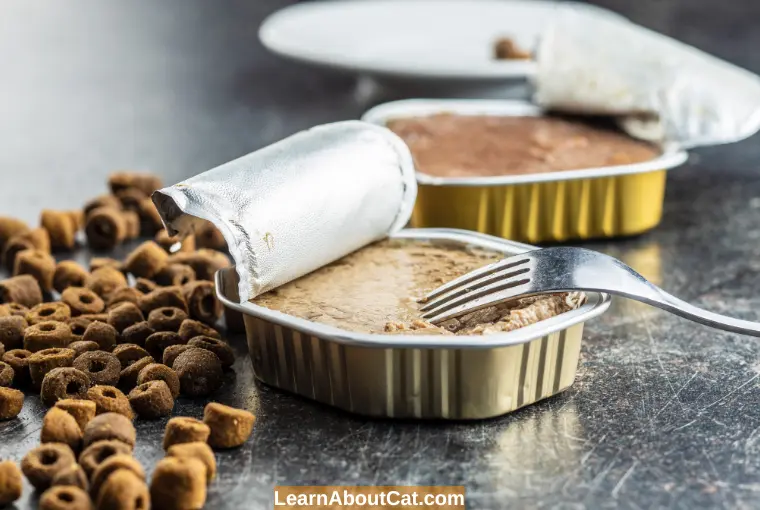
It depends on the weight of how much she eats regularly. Then, look at your cat’s food label to find out how many calories are in each kilogramme, a can of wet food, and a cup of dry food. Divide the calorie content of the meal (in kcal per can or cup) by the caloric requirements of your kitten to determine how much food to give your cat each day (in kcal per day).
According to stats, if a kitten’s weight is 5lb, you should provide your kitty 327 kcal each day. You may calculate the amount of wet food to feed your kitten by multiplying the 327 calories per day by the 108 calories found in each can of wet cat food.
Check Out: Do Kittens Need Wet Food?
Do kittens Eat at Certain Times? How Often to Feed Kittens
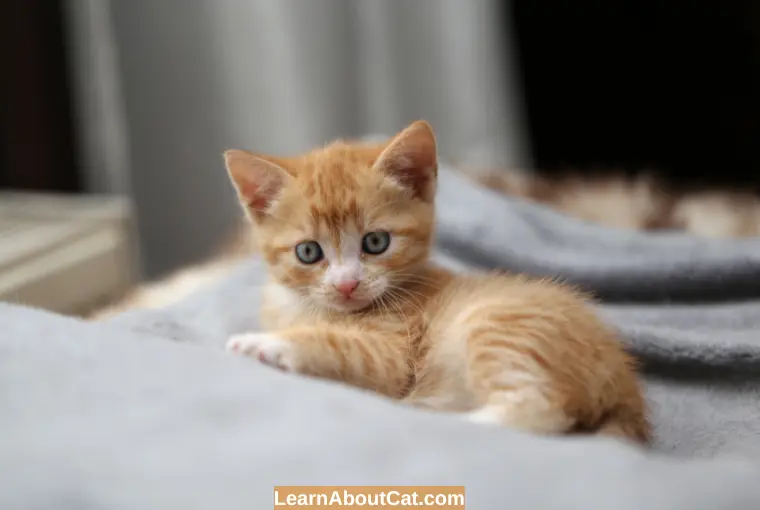
The majority of kittens should have food provided both during the day and at night until they are 4-6 months old. Depending on their caloric requirements, give your kitten two to three servings of canned food each day. You should also always have high-quality dry kitten food on hand. Unless your kitten is really ill, it’s usually a good idea to switch to a meal-based feeding schedule around this time.
The following is a recommended feeding schedule for your kitten:
- Cats frequently consume several little meals throughout the day.
- For four to six-month-old kittens, 3 meals should be provided to them.
- Two meals should be given to a 10-month-old kitten.
- Up to six small meals each day are the recommended number.
- You might wish to utilise an automated timed feeder like the PetSafe Six Meal Automatic Pet Feeder, which comes preloaded with six metered meals each day, as the majority of us find it difficult to stick to this kind of schedule.
Also Read: Should I Leave Food Out For My Cat At Night?
When to Stop Feeding Your Kitten a Kitten Food
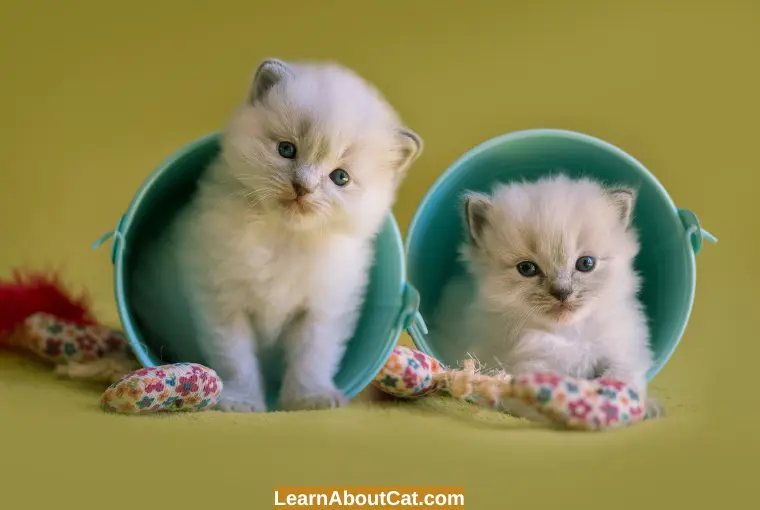
It’s important to consider your cat’s age while deciding on a food type. To support a kitten’s healthy growth, kitten food must be provided. Similar to adults, adult cats should consume fewer calories, fat, and proteins to avoid issues like obesity.
Therefore, the question of how long kittens should eat kitten food comes up. Theoretically, the answer is simple: until they’re adult cats! But this oversimplifies the problem. It takes time, and it could be not easy to distinguish between being a kitten and becoming an adult. Cats do not suddenly awaken as adults.
Find Out: How Long Should Kittens Eat Kitten Food?
Furthermore, different breeds mature at various speeds. At the age of 1 year, most cats become mature. One of the breeds, named Maine Coons acquire maturity at the age of 2 years. Since they are growing for a longer period of time than most other cats, these cats need nutrient-rich kitten chow for longer than most other cats do. As a result, I suggest switching from kitten food to adult cat food when your cat weighs around 90% of what a cat of that breed should weigh at full maturity. Once your kittens are about adult size, it’s time to introduce them to adult food. If you are unsure, contact your veterinarian. They’ll give you their opinion based on the cat’s age, breed, and current weight.
Frequently Asked Questions
The Bottom Line on How Much to Feed a Kitten
You should consider transitioning your kitten to cat food when it is around a year old. The majority of breeds are practically mature by the time they turn one. They gain more on a diet intended to fit the demands of an adult body and no longer need the extra calories or proteins present in formulas created for kittens.
Large breeds, like Maine Coons, require more time to reach full maturity. Because of this, kids need extra calories and proteins for a longer time. This ensures that kittens grow into full-sized adult cats that are content, healthy, and lively.
Related Posts:
Who is Isabella?
My name is Isabella, and I am a dedicated and knowledgeable cat enthusiast. With years of experience caring for cats and a deep love for felines, I made a mission to help other cat lovers navigate the challenges of cat ownership.

